Measuring Precipitation
Precipitation is the name given to the various ways in which water falls from the sky and reaches the ground. This can include drizzle, rain, sleet, hail and snow.
The amount of rainfall can be important for a variety of reasons. People who grow plants like to know how much rain has fallen. Those who live near rivers may be affected by how much rain there has been.
When you have finished reading about this you may want to return to Collecting Data.
Units of MeasurementRain is measured in millimetres. This is because you are measuring the depth
of the rain which has fallen. |
 |
The Rain Gauge ScaleA funnel shape is used so that when there is only a little rain it is easier to measure. You can see that the markings at the bottom are further apart because the funnel is narrower there. Nearer the top, where the funnel is wider, the markings are closer together. Record ½ as ·5, ¼ as ·25 and ¾ as ·75. |
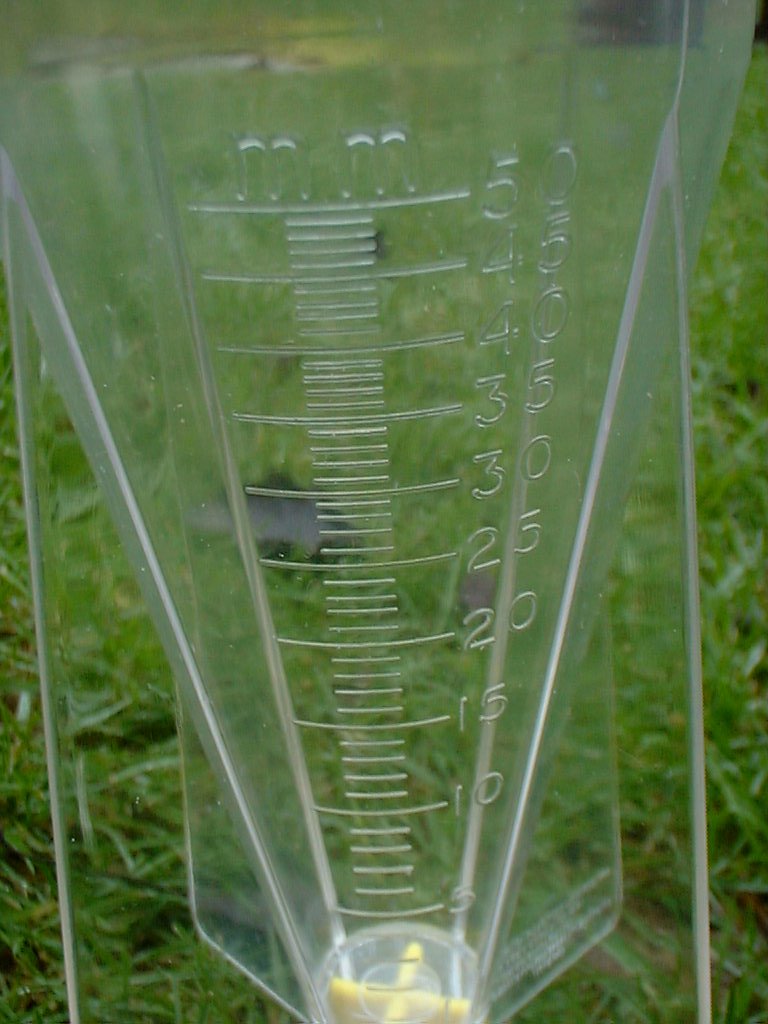 |
Keeping it LevelWhen measuring the rain you need to keep the gauge very level. Take the funnel off its spike and place it on a flat surface. Look at the picture to see the weather watcher reading the scale carefully. |
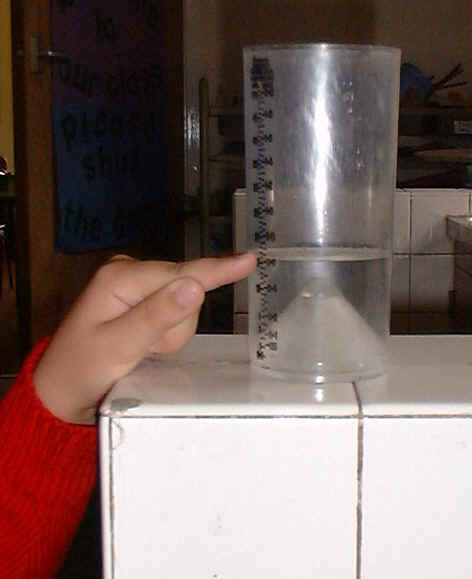 |
How not to do it!Tipping the gauge on its side will give an incorrect reading. This is true in most capacity procedures. The two images on the right show the same amount of water. See how the reading changes if it is not level. |
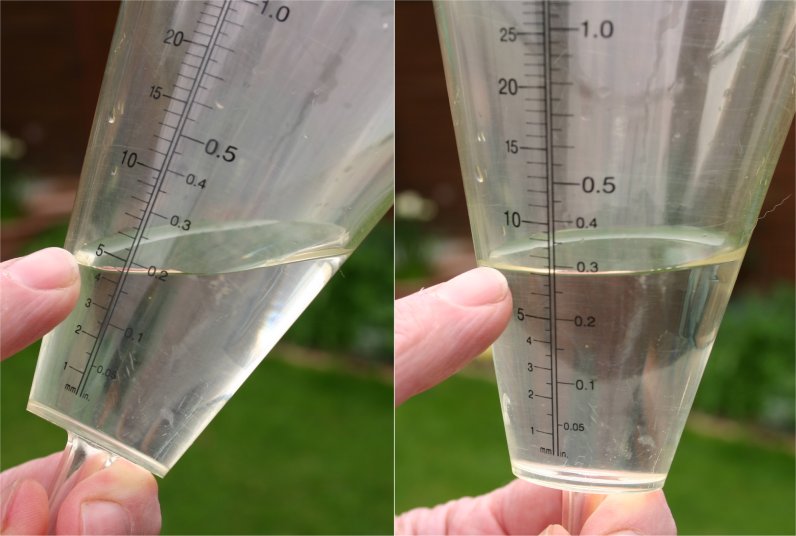 |
SnowWhen the temperature is cold, precipitation will take the form of snow. It is usual to measure its depth in milimetres. Do make sure that your ruler does not have a 'dead end' or extra bit on the end which is not included in the measurement. A metal ruler like the one in the picture is a good one to use. Clear the area where you measured the snow. You want a fresh start in case you need a reading the next day! |
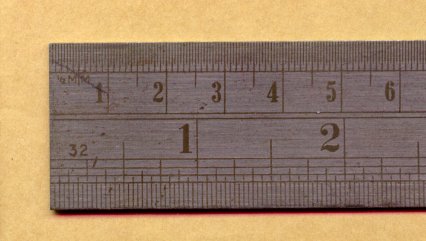 |
Hail and SleetThere is rarely an opportunity to observe this at the time of taking the weather
readings. It is usually treated as any other precipitation,
as it melts into the rain gauge. In Great Britian the term sleet is used to describe a mixture of rain (or drizzle) and melting snow. |
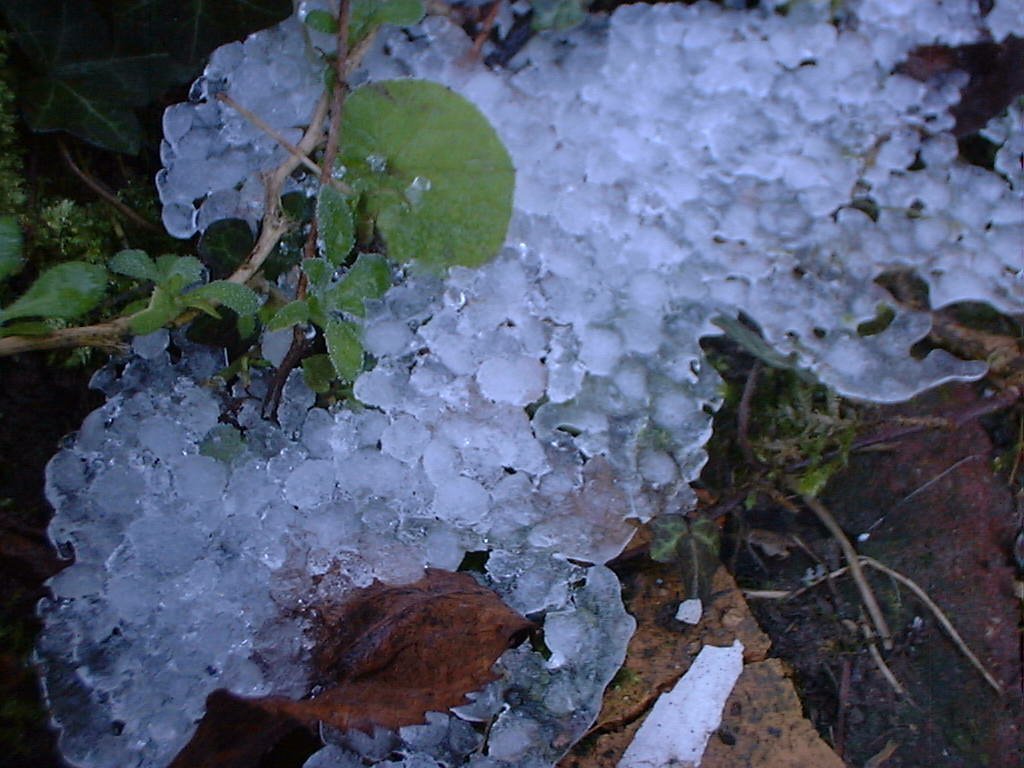 |